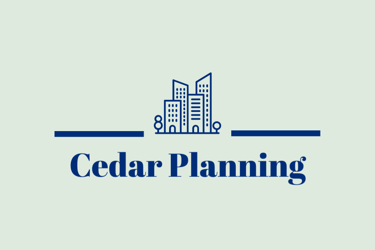Understanding Local Plans: A Guide for Developers, Landowners, Homeowners, and Residents
8/6/20253 min read


Understanding Local Plans: A Guide for Developers, Landowners, Homeowners, and Residents
Welcome to Cedar Planning, where we strive to demystify the planning process and provide valuable insights for developers, landowners, homeowners, and residents. In this blog post, we will delve into the concept of a local plan and explain why it holds significant importance for all stakeholders involved.
What is a Local Plan?
A local plan, also known as a development plan, is a strategic document that outlines the long-term vision and objectives for a specific area or region. It acts as a blueprint for future development and guides the decision-making process when it comes to land use and planning applications.
Local plans are created and maintained by local planning authorities, such as city councils or district councils, in collaboration with various stakeholders, including residents, businesses, and community groups. These plans are designed to reflect the unique characteristics and needs of the area they cover.
Some areas will have one Local Plan. Others have a more complex combination of different plans, which can include Local Plans, Core Strategies, Site Allocation Documents, Area Action Plans and more. Taken together, these plans alongside the Waste and Minerals Plan and any Neighbourhood Plans in the area, become the development plan for the area.
Why are Local Plans Important?
Local plans play a crucial role in shaping the physical, social, and economic aspects of a community.
Planning law requires that planning decisions are made in accordance with the development plan, unless material considerations indicate otherwise. This means that Local Plans are the starting point for decision making. However, decisions can be made against local plan policies where the benefits of the scheme outweigh the harms.
Local Plans can also set a vision and direction for future growth in an area. This could be an increase in affordable housing, a specific focus on biodiversity, climate change or net zero homes, or economic benefits such as new job creation. Or a balance of all of these key factors.
The Local Plan Process
The Local Plan process involves many key stages which allow local residents and communities to engage in the Local Plan. This offers local residents and communities a unique opportunity to shape the future of their area and help shape key objectives for the area they live, work or play in.
Inevitably, local plans aim to strike a balance between different interests and priorities. They consider factors such as housing needs, economic growth, environmental protection, heritage preservation, and social inclusion. By taking a holistic approach, local plans help create vibrant and sustainable communities.
If you want to get involved in your Councils Local Plan, many authorities have a mailing or subscription list which will ensure you are kept up to date with any new consultations. Local Plans and their supporting evidence documents are extremely long documents, but consultations need to last a minimum of 6-weeks and you do not need to read or comment on all sections to get involved.
The development of a local plan involves several stages and typically follows a structured process. Here is an overview of the key steps:
1. Evidence Gathering and Research
Local planning authorities gather data and evidence to understand the existing conditions, challenges, and opportunities within their area. This includes demographic information, economic data, environmental assessments, and infrastructure assessments.
2. Consultation and Engagement
Engaging with the local community and other stakeholders is a crucial part of the local plan process. This can involve public consultations, workshops, surveys, and meetings to gather feedback, ideas, and concerns. The input received helps shape the content of the plan and ensures it reflects the aspirations of the community.
3. Drafting the Plan
Based on the evidence gathered and the input received, the local planning authority prepares a draft local plan. This document sets out the proposed policies, allocations, and development strategies for the area. It undergoes a thorough review and refinement process before being made available for public consultation.
4. Examination and Adoption
The draft local plan is subject to an independent examination by a planning inspector appointed by the government. The inspector assesses whether the plan is legally compliant, sound, and in line with national planning policies. Following any necessary modifications, the plan is adopted by the local planning authority and becomes a statutory document.
5. Implementation and Monitoring
Once adopted, the local plan guides decision-making on planning applications and development proposals. It provides a framework for determining whether a proposed development is in line with the vision, objectives, and policies set out in the plan. The plan's implementation is monitored over time to ensure its effectiveness and relevance.
Conclusion
In conclusion, a local plan is a fundamental tool in the planning process that helps shape the future of an area. It provides a shared vision, manages growth, engages communities, and balances competing interests. By understanding the role and importance of local plans, developers, landowners, homeowners, and residents can actively participate in the planning process and contribute to the creation of thriving and sustainable communities.
Contacts
Email: info@cedarplanning.co.uk
Phone: 07418 610156
Office (by appointment only) Cedar Planning Ltd, 82a James Carter Road, Mildenhall, Bury St Edmunds, IP28 7DE


Click the above button for a free Whatsapp consultation

